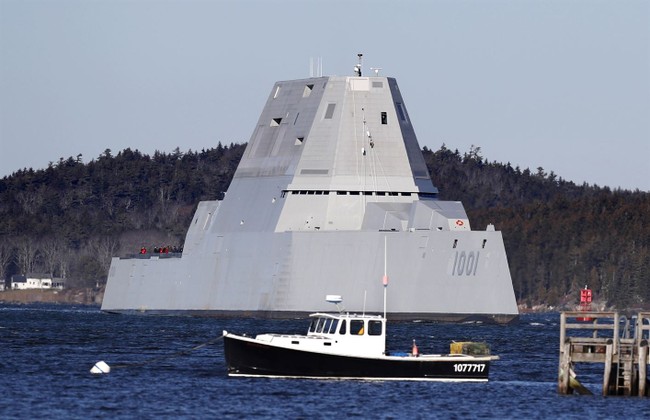
The USS Zumwalt was the first in a class of what was supposed to be stealth destroyers for the United States Navy, having the radar cross-section of a fishing boat. That warship was not entirely successful, having been plagued with problems in the propulsion, and was, in the end, something of an expensive and ineffective boondoggle.
Now, though, the Zumwalt is back in the yard, being refitted to act as a test bed for a new hypersonic weapon system.
The USS Zumwalt is at a Mississippi shipyard where workers have installed missile tubes that replace twin turrets from a gun system that was never activated because it was too expensive. Once the system is complete, the Zumwalt will provide a platform for conducting fast, precision strikes from greater distances, adding to the usefulness of the warship.
“It was a costly blunder. But the Navy could take victory from the jaws of defeat here, and get some utility out of them by making them into a hypersonic platform,” said Bryan Clark, a defense analyst at the Hudson Institute.
The U.S. has had several types of hypersonic weapons in development for the past two decades, but recent tests by both Russia and China have added pressure to the U.S. military to hasten their production.
Hypersonic weapons travel beyond Mach 5, five times the speed of sound, with added maneuverability making them harder to shoot down.
Until, that is, someone develops a counter-missile system precisely to deal with this threat; a high-intensity laser or a projected-energy weapon would seem to be just what the doctor ordered. That’s why they call this kind of thing an “arms race.”
But it’s an interesting choice to use the USS Zumwalt as a test bed; the Navy may as well get some added use out of a ship that wasn’t all it was cracked up to be.
In choosing the Zumwalt, the Navy is attempting to add to the usefulness of a $7.5 billion warship that is considered by critics to be an expensive mistake despite serving as a test platform for multiple innovations.
The Zumwalt was envisioned as providing land-attack capability with an Advanced Gun System with rocket-assisted projectiles to open the way for Marines to charge ashore. But the system featuring 155 mm guns hidden in stealthy turrets was canceled because each of the rocket-assisted projectiles cost between $800,000 and $1 million.
It’s unclear as to how much the hypersonic weapons will cost.

















